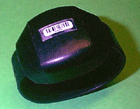Risk-based access solution from SecureAuth, iZipline taps HID
14 August, 2014
category: Biometrics, Corporate, Digital ID, Government, NFC
SecureAuth unveils risk-based access control product
SecureAuth Corp. launched SecureAuth IdP 8.0, an access control solution that incorporates risk-based authentication – analyzing and stopping attackers before they breach your environment. This new functionality aims to enhance the multi-factor authentication workflows that can be built and integrated with existing corporate resources and policies for cloud, mobile and desktop access.
SecureAuth IdP 8.0 risk-based authentication includes four criteria to deliver an accurate threat assessment including: IP address, IP reputation using threat intelligence powered by Norse Corporation’s DarkMatter network, group membership and geo-location/geo-velocity.
The authentication workflows can include all four of these criteria chained together or a subset. At each point of inspection, there are four actions that can be taken: pass, challenge, redirect or fail. To a legitimate user, this analysis is transparent, ensuring that their user experience is preserved.
SecureAuth IdP 8.0 additional features and benefits include:
- A transformation engine that changes user attributes to meet custom mapping needs, removing the need to store and retain custom attributes in the data store
- Two-factor authentication support for Windows desktops and servers that aims to increase protection for Windows administrative and user accounts.
- Account provisioning and synchronization that eliminates the need to manually manage user data in multiple locations
- A visual configurator that speeds the creation of authentication workflows
iZipline integrating HID trusted tags
HID Global announced that iZipline will integrate HID Trusted Tag Services into its cloud-based software platform that enables mobile consumer engagement via Near Field Communications technology.
Initially, trusted tags will be used for authentication of PackageTagz, iZipline’s patent-pending technology for pouch packaging that provides engagement between brands and consumers’ mobile devices for product recall, track and trace, brand protection, mobile marketing and related analytics.
HID Trusted Tag Services feature tags with unique security and privacy attributes that make each tap unclonable. When integrated into iZipline’s platform, this enables global brands to authenticate each product’s package, protecting both a company’s brand and consumers from counterfeit goods while also delivering chain-of-custody benefits. Trusted tags also provide iZipline with secure connections for instant delivery of relevant and timely product content to consumers via their mobile device.
Credence ID, Fulcrum Biometrics rolls out prison solution
Credence ID and Fulcrum Biometrics announced two new deployments of their combined Android-based mobile biometric solution in Mexico and Guatemala. Both projects will deploy mobile biometric equipment and software to manage jail populations and to enhance prisoner and public safety.
The Policia Nacional Civil de Guatemala will use the Trident device, which includes fingerprints, iris matching and facial recognition, for prisoner enrollment and identification in the national prison system in Guatemala. The hardware and software solution, available from Fulcrum Biometrics, allows the Policia Nacional Civil to both enroll and identify individuals with on-board biometric matching capability.
In addition to the project in Guatemala, Credence ID and Fulcrum announced purchase orders for a prison management and roll call project in Mexico. The Android application, written by Fulcrum Biometrics, is in support of a larger server based prison management system developed by a local Fulcrum partner. The server-based solution runs on top of the Fulcrum Biometric Framework and supports the fingerprint and iris recognition capabilities of the Trident and Credence One devices.
The onboard storage and matching capabilities of Credence ID devices suits them for this type of use case due to the fact that prisons are typically difficult to network wirelessly by virtue of the extensive amount of concrete and metal used in the buildings. The application automatically downloads the entire “roll call” from the master database then uses on board matching to verify that each prisoner is in their expected location.
Officers simply move from cell to cell while each detainee touches the scanner or looks into the iris camera thus providing extremely accurate and fast identification. The roll call application automatically marks each prisoner as present or not present and stores results on the device. When the officer returns to the control room, the application wirelessly uploads the results and alerts the officers of any abnormalities.




